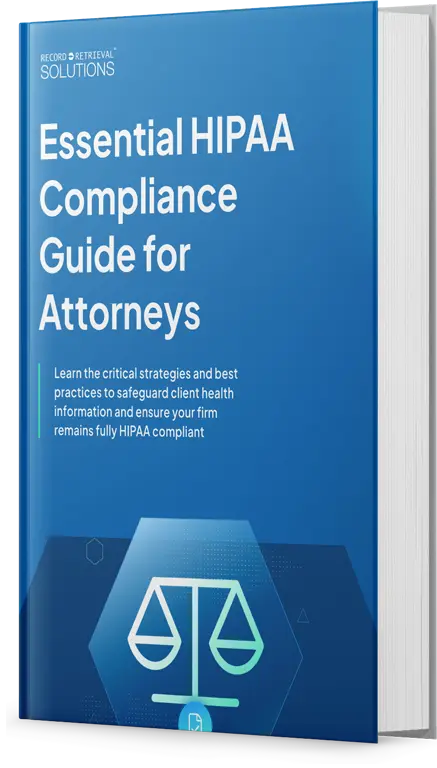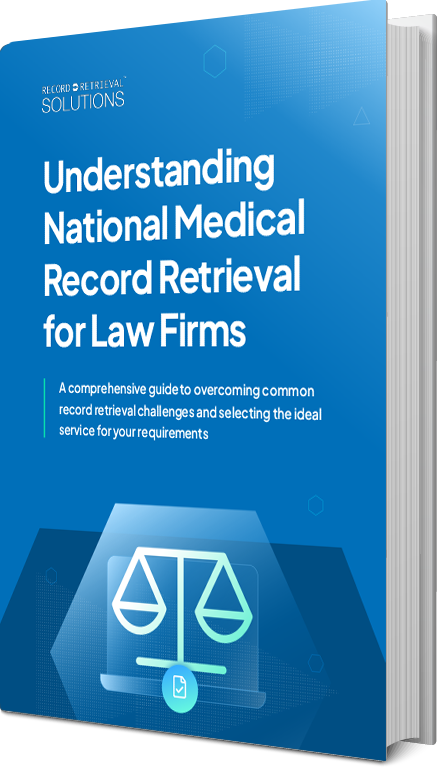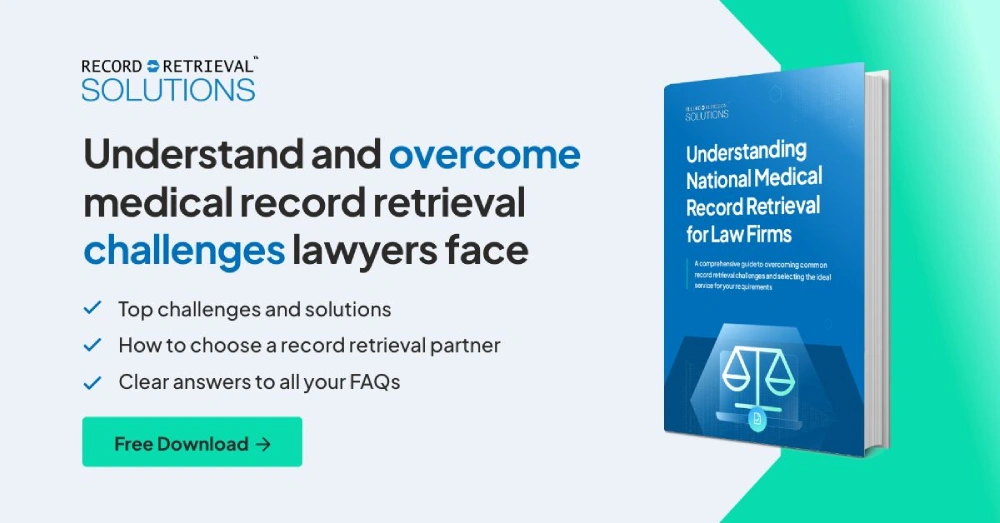Requesting medical records for legal and insurance purposes is as much an art as it is a science. Longtime practitioners develop intricate systems for tracking the progress of requests they send out, with letter-perfect templates and pop-up reminders at all the right intervals to ensure they receive thorough and accurate records.
The whole system, though, is only as good as the information used at its beginning. We’ve come up with a list of 8 types of information that: (1) needs to be collected during a client consultation, and (2) must be tracked throughout the entire process for obtaining medical records to ensure you are able to accurately request a complete medical history needed for your case.
Without knowing these 8 specific details about a request, requesters encounter numerous stumbling blocks before complete records are delivered, such as the need to contact the client again for more information or the need to send out additional requests asking for priority processing.
These stumbling blocks cause weeks-long delays and increases the need for repeated inquiries to check in on a request’s progress. And every time another phone call or request is made, it creates yet another opportunity for introducing errors, however inadvertently.
Similarly, without tracking certain information as a request progresses, requesters find themselves back-paddling and fishing around in massive piles of records for details about issues such as what was said when and by whom, when treatment was received at which location, or the amount of a case’s medical costs to date.
Thankfully, all of this can be avoided. It makes for a much smoother workflow if the correct information listed below is gathered and tracked throughout the request and retrieval process. And, rather than going through all the unpleasant work yourself and wasting a lot of time and effort by learning the hard way, you can use this list to develop a chart that ensures you collect all of the relevant details necessary for fast, thorough medical records retrieval.
Here are the 8 critical details that you should keep at your fingertips to save you a lot of time and effort:
1) Patient’s Name, Birthdate, and Account Number
Names are obvious, right? Yes, but make sure you also ask for any variations of their name they’ve ever used in the past and common misspellings that may occur. Don’t forget to also get any former names used before legal name changes were made.
Providers typically ask for a birthdate to confirm the correct patient account, so you’ll want that handy as well. Also add the patient’s account number in your chart for easy reference when you call records custodians and healthcare providers.
2) Healthcare Facility and Healthcare Provider Names
Another obvious one, right? But one that needs mentioned because of the ease of which provider partners or departments can get overlooked. For example, if your client was seen in the emergency room at St. John’s Hospital, you know you need to send a request to the hospital records custodian. But, you may also need to send separate requests for records related to the same incident to additional providers not under the St. John’s hospital umbrella such as those for x-rays, anesthesia, and emergency transportation.
3) Records Custodian Name and Contact Information
You’ll want this information handy for any issues that arise.
4) Notes/Status Update Section
Include a notes section for each request that includes the latest update on its progress. Jot down the details of your communications with custodians and providers and the next steps required so you know at a glance where a request stands and how to pick things up to move it along.
5) Dates of Service of the Records Received
This could be THE most important detail to track as far as saving time and effort is concerned. Law firms often wind up with multiple sets of records from a single provider. This could happen because you need to send more than one request when treatment is ongoing. Or, your client may remember additional treatment that requires requesting records for an earlier or later date range than those already obtained.
Whatever the reason, the best way to delineate multiple sets of records are by date ranges. Tracking records by dates of service as they are received spares you the agony of thumbing through stacks of papers or scrolling through seemingly endless PDFs later to determine whether you have all of the correct information your case requires.
6) Bates Ranges
This chart is also the perfect place to keep a record of the Bates ranges for each providers once those are applied.
7) Billing Totals
Billing records should be tracked the same way as treatment records. After a set of billing records is received, total their costs and add that number to your chart. Of course, make sure your totals are delineated by their own dates of service. This way, you can keep a close estimation of the running total of the case’s medical care costs to date.
8) Fees for Medical Records
Also track the fees your firm has paid for each set of records so that they can be easily added to an application for attorneys’ fees and costs.
Streamlining Medical Records Requests
One of the best ways to streamline how you obtain medical records is to collect all the right information from the start and track these important details throughout the process. Careful organizations done early save loads of time of effort later. And, you spare yourself from agonizingly dull tasks like repeatedly looking up dates and dollar amounts. With a single glance at your chart, you can answer all the most important questions about a case’s medical records swiftly and accurately and look like the real pro you truly are.
Many firms have discovered the benefits of shifting these tracking and follow-up responsibilities away from their own personnel and onto a trusted medical records retrieval service provider. For more information on how you can rely on service provider to request, track, and deliver verified records as well as provide you with customized reports and timelines, visit RecordRs.com.







